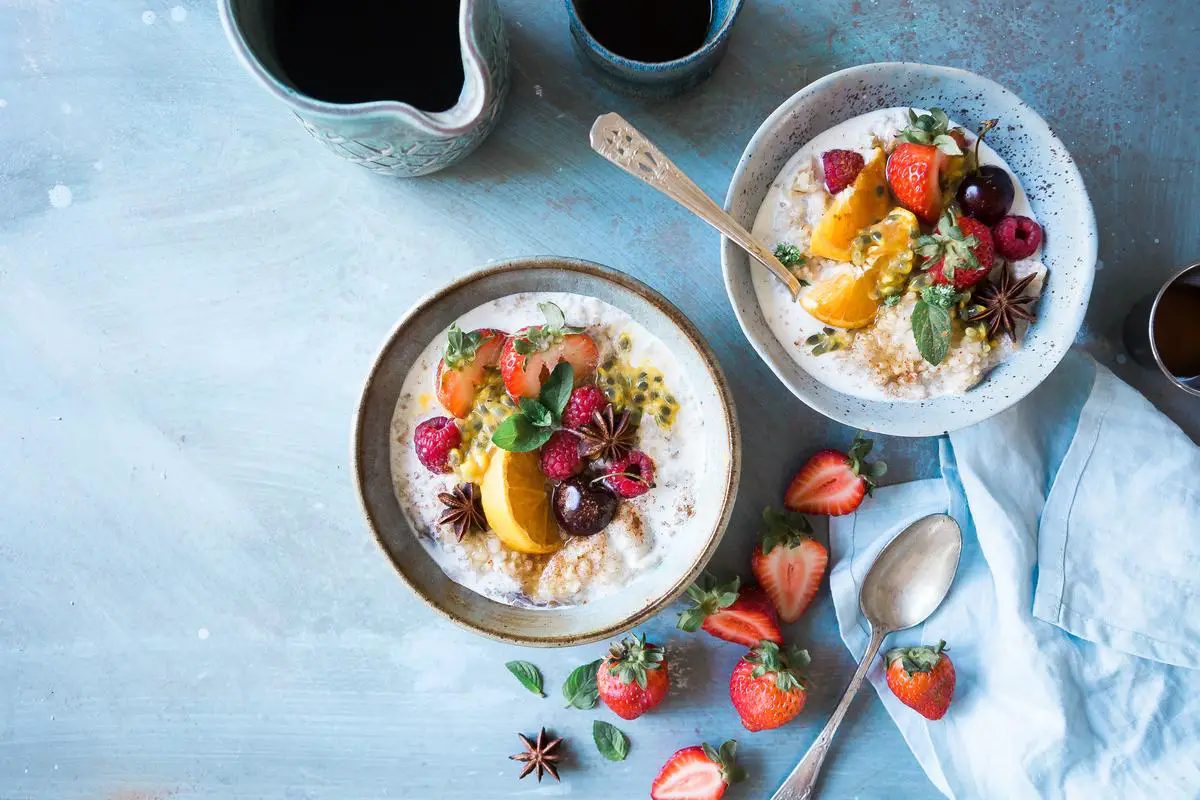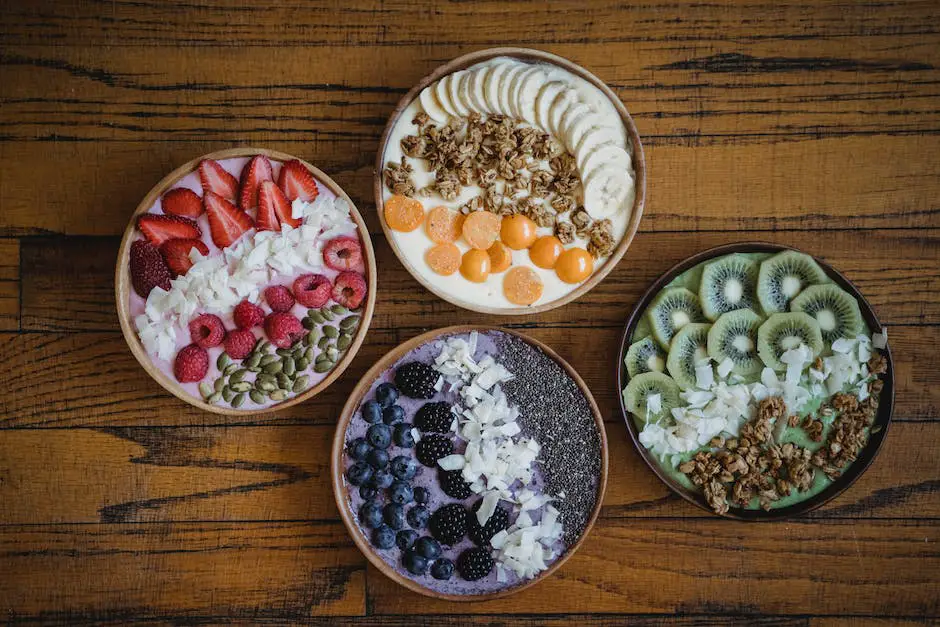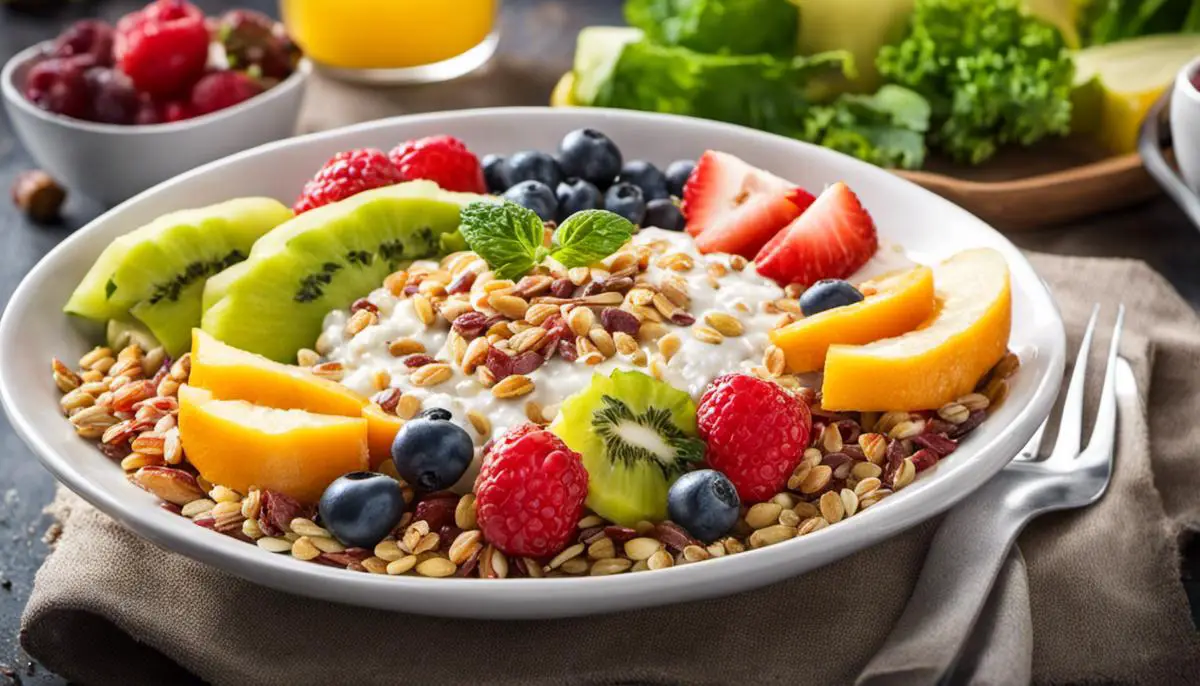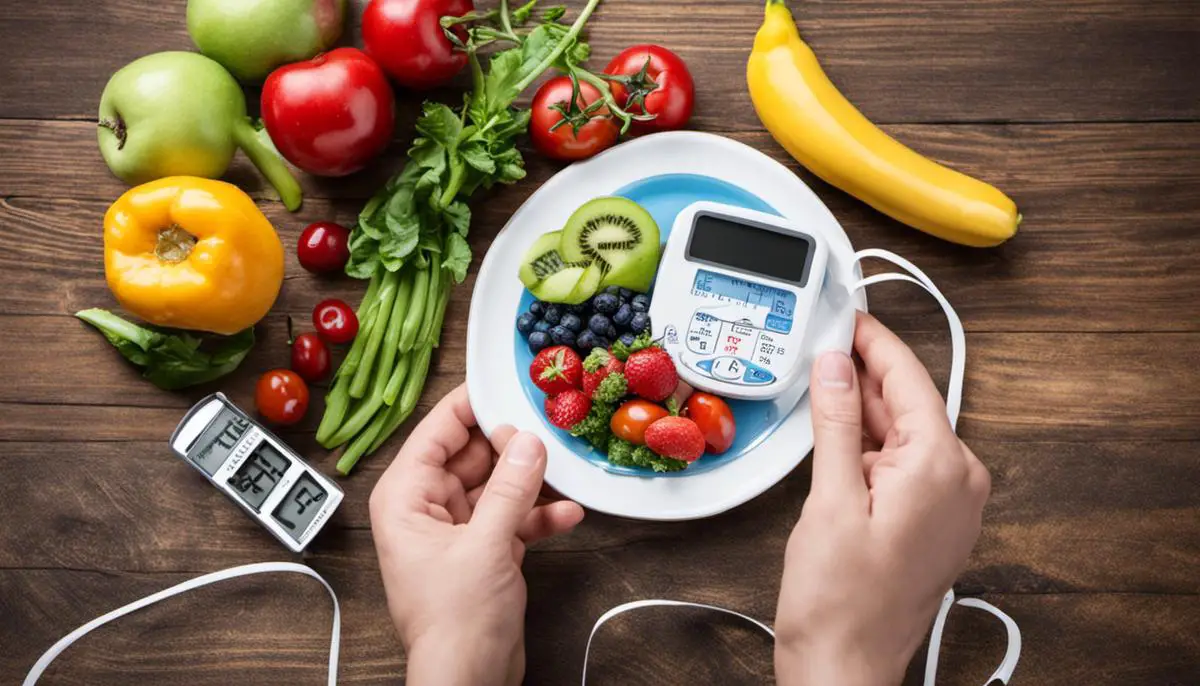In a world where health and wellness are becoming increasingly important, understanding how certain conditions impact not only our well-being but also our daily activities, is essential. One such condition – diabetes – has a far-reaching effect on a person’s lifestyle, touching on everything from physical activity to diet. Specifically, food plays a significant role in managing and controlling diabetes, and as such, it is crucial for diabetics to be aware of what they consume. The aim of this discussion is to delve into diabetes and its relationship with food, shedding light on the importance of proper nutrition in managing blood sugar levels. This information can be used as a foundation to choose the right ingredients and plan meals for diabetics. It explores diabetic-friendly ingredients in depth, especially focusing on their nutritional content, glycemic index, and the effect they have on blood sugar levels. Additionally, it details various cooking techniques that enhance the nutritional value of food, lower its glycemic index, and increase its palatability. Furthermore, it provides a collection of diabetic-friendly breakfast recipes that can be prepared with these ingredients and techniques, making it easier for diabetics to plan healthier meals.
Understanding Diabetes and Diet
Understanding Diabetes: A Chronic Health Condition
Diabetes is a chronic health condition that affects the way your body regulates glucose, or sugar, in your blood. Type 1 diabetes results from an autoimmune reaction that stops your body from making insulin, a hormone that regulates blood sugar. With type 2 diabetes, your body either resists the effects of insulin or doesn’t produce enough to maintain normal glucose levels. Both can lead to high blood sugar levels and cause complications like heart disease, stroke, kidney disease, vision problems, and nerve damage.
Impact of Diet on Blood Sugar levels
Diet plays a crucial role in managing a person’s diabetes and maintaining optimal health. The food one consumes directly affects their blood sugar levels. Foods high in carbohydrates, for example, can raise blood sugar levels quickly, while protein and fat have a slower effect. Low-glycemic index (GI) foods, such as whole grains, legumes, vegetables, and some fruits, are digested more slowly, causing a lower and slower rise in blood glucose levels.
The Importance of Low-Glycemic Index Foods
Low-Glycemic Index (GI) foods play a pivotal role in managing diabetes. These foods slow digestion and absorption, resulting in gradual rises in blood sugar and insulin levels instead of quick spikes. Low-GI foods also provide long-lasting energy, help you stay full longer, and can even enhance physical endurance. Foods with a low glycemic index include intact whole grains, nuts, legumes, fruits, vegetables, lean meat, and fish.
Inclusion of High Fiber Foods in Meal Planning
Dietary fiber is another essential component to consider for diabetic-friendly meals. High-fiber foods not only slow the rise in blood glucose levels but also reduce the risk of obesity and heart disease by making you feel full, which can help control your weight. Foods rich in fiber include vegetables, fruits, legumes, and whole grains.
High Protein Food Advantages
Incorporating higher amounts of protein in your diet can be another beneficial factor in managing diabetes. Protein takes longer to digest, helping to stabilize blood sugar levels for longer periods of time. Furthermore, it aids in maintaining lean body mass during weight loss. Foods higher in protein include lean meats, eggs, fish, tofu, lentils, and Greek yogurt.
Understanding Food Combinations
Understanding ideal food combinations for diabetics is also helpful when planning meals. Pairing carbohydrate-rich foods with protein or healthy fat can slow down the absorption of carbohydrates and thus prevent blood sugar levels from spiking. For example, pairing whole grain toast with eggs or apple slices with almond butter could be beneficial.
Applying This Knowledge: Examples of Diabetic Friendly Breakfast Recipes
With the foundation laid about the effects of various types of food on blood sugar levels, it is easier to plan meals. For instance, a diabetic-friendly breakfast could include a high-fiber, low-GI meal like steel-cut oats topped with almonds and blueberries. Another option could be a high-protein breakfast such as scrambled eggs with spinach and a slice of whole wheat toast. Each meal is balanced and designed to maintain healthy blood sugar levels throughout the day.

Photo by brookelark on Unsplash
Diabetic-Friendly Ingredients
Diabetic-friendly Grains
Whole grains are an important component of a diabetic-friendly diet due to their high fiber content which helps regulate blood sugar levels. Foods like oatmeal, whole-grain bread and brown rice are good choices. Oatmeal has a glycemic index of 55, making it a slow-releasing carbohydrate that won’t spike your blood sugar.
Beneficial Proteins
Lean proteins like chicken, fish, eggs, and tofu can be reliably included in a diabetic-friendly breakfast. These foods have a negligible effect on blood sugar levels, making them safe and healthy options for diabetics. Avoid processed meats which can contain harmful additives and high sodium levels.
Fruits for Diabetics
Certain fruits, like berries, apples, and oranges, can be quite beneficial for those managing their blood sugar. These fruits have a lower glycemic index compared to others and are packed with vitamins and fiber. Berries, for instance, have a glycemic index of 41 which is considered low. Keep in mind although fruits are a healthy choice, they should still be eaten in moderation due to their natural sugar content.
Vegetables and a Diabetic Diet
Non-starchy vegetables like spinach, broccoli, and bell peppers are ideal for a diabetic diet. These foods have a low impact on blood sugar levels and are loaded with vitamins and minerals. Steer clear of starchy vegetables like potatoes which have a high glycemic index and can raise blood sugar levels.
Diabetic-friendly Beverages
Avoid beverages high in added sugars like sodas and juices. Instead, opt for water, unsweetened teas, or coffee. These drinks don’t raise blood sugar levels. Green tea in particular is a good choice as it’s rich in antioxidants which potentially help regulate blood sugar levels.
Sweeteners for Diabetics
Artificial sweeteners, stevia, and other sugar alternatives can help satisfy a sweet tooth without causing a spike in blood sugar levels. Stevia, for example, has a glycemic index of zero and doesn’t raise blood sugar. However, moderation is crucial even with these alternatives to prevent potential negative effects on overall health.
Overall
it is crucial to select foods that are low on the glycemic index, and high in fiber and other necessary nutrients to manage diabetes effectively.

Diabetic-Friendly Cooking Techniques
Steaming: Preserving Nutrients in Food
Steaming is an excellent way to prepare food because it retains more nutrients compared with other cooking methods. This technique involves cooking food by using the steam from boiling water. This helps to keep food moist, eliminates the need for oil, and can reduce the glycemic index of certain food items like potatoes. Foods that are especially good to steam include vegetables, chicken, and fish.
Grilling: Lowering the Glycemic Index
Grilling, another healthy cooking technique, involves cooking food on a grill over a heat source. Not only does this method add a delicious smoky flavor to food, but it also can lower the calorie level by draining off excess fats. Foods like vegetables and lean meats are perfect for grilling. Furthermore, grilling can lower the glycemic load of food, potentially making it a good cooking technique for diabetics. However, remember to use healthy marinades without added sugar to avoid spiking blood sugar levels.
Baking: A Healthy Alternative to Frying
Baking is a beneficial method for diabetics as it requires less oil, making for lower-fat and lower-calorie meals than frying. Baking in an oven involves cooking food by dry heat. This technique can be used to cook a variety of foods, including lean meats, fish, vegetables, and even fruits. By using baking, you can control the amount of oil used and therefore, manage your daily fat consumption.
Sautéing with Less Oil: Retaining Flavor while Reducing Fat
Sautéing is a technique that involves cooking food quickly over high heat with a small amount of oil or fat. It’s a particularly good way to cook vegetables as the quick cooking time preserves their nutrients and their natural color, flavor, and texture. For a diabetic-friendly version of sautéing, try using non-stick cookware and small amounts of healthy oils like olive oil. Adding spices and herbs can also elevate the taste without the need for excess oil or salt.
Using Spices: Enhancing Flavor without Adding Extra Calories
Last but not least, the use of spices and herbs in cooking can tremendously enhance the flavor of food without adding extra calories or sodium. Spices such as cinnamon and turmeric have been found to have properties that may help to lower blood sugar levels. Using these in your food can not only make your dishes taste better but also help manage diabetes.

Creating Diabetic-Friendly Breakfast Recipes
Planning Diabetic-Friendly Breakfast Recipes
Planning for diabetic-friendly breakfasts involves knowledge about foods that are low in carbohydrates, high in fiber and protein. It’s important to include whole grains, lean proteins, fruits, and vegetables, while avoiding added sugars.
Whole-Grain Pancakes
Substitute regular flour with whole grain flour that is high in fiber for a diabetic-friendly pancake recipe. Add a small amount of sugar substitute and mix with water until it becomes a malleable dough. Preheat a non-stick pan and gently smooth the dough to form pancakes. Bake each pancake until golden brown. You can serve it with sugar-free syrup or a handful of fresh berries.
Hearty Oatmeal
Prepare whole oats, which are lower in carbs and higher in fiber than instant versions, with water or low-fat milk. Monitor the amount of sweeteners used. You can add in cinnamon for added flavor, and top with some nuts and berries for extra protein and fiber.
Breakfast Wrap
Using a whole grain tortilla, spread a thin layer of low-fat cream cheese or Greek yogurt. Add scrambled egg whites and load up with fresh spinach, tomatoes, cucumber and lean turkey. Roll it up for a hearty and nutritious wrap.
Eggs with Vegetables
For a more traditional breakfast, try a simple dish of scrambled eggs with vegetables. Beat a few eggs with a dash of low-fat milk, then sauté in a non-stick pan with a pinch of olive oil. Add bell peppers, onions, mushrooms, and other favorite vegetables.
Low-Carb Smoothies
Prepare a smoothie by blending a small portion of fruit with protein-packed Greek yogurt, unsweetened almond milk and a handful of spinach. Some proper fruits include strawberries, blueberries, or a small green apple. Add some chia or flax seeds for an extra fiber boost.
Whole Grain Avocado Toast
Slice a full grain bread, toast until golden. Meanwhile, mash up an avocado with a little lemon juice and season to taste. Spread the avocado over your toast and serve with hard-boiled eggs for a protein boost.
As you cook, take note of the measurements and carb counts, keeping them consistent to ensure your blood sugar remains steady. It’s also important to have regular meal times to avoid skipping meals or overeating.

Armed with this understanding of diabetes and diet, selecting beneficial ingredients, and deploying the right cooking techniques, individuals with diabetes can confidently construct breakfast recipes that are not only enjoyable but also conducive to their health. The ultimate goal is to demonstrate that living with diabetes does not have to deprive one of tasty and satisfying meals. Moreover, by incorporating whole-grain pancakes, fiber-rich oatmeal, breakfast wraps, vegetable-filled eggs, and low-carb smoothies into their daily routines, diabetics can indulge in a gastronomical exploration that is also healthy. Above all, the diet should not be seen as a limitation but as a platform to explore new food combinations and cooking techniques that contribute positively towards overall health while keeping blood sugar levels in check. It is about creating a balance between nourishing the body, satisfying cravings, and managing diabetes – a balance achievable through knowledge, creativity, and a keen focus on health.
